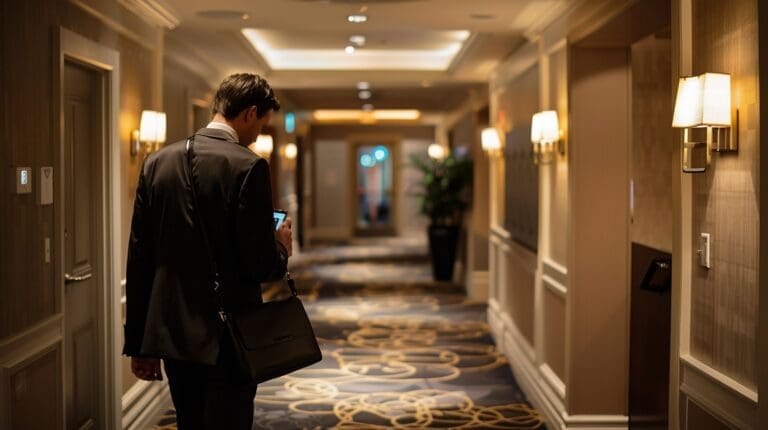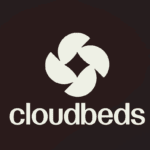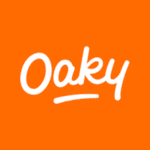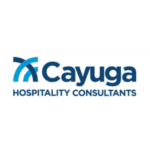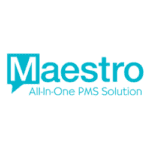 We all know that a recovery in the hotel industry is coming, but that doesn’t mean we can immediately staff back up to where we were in 2019. Instead, the future of hospitality will increasingly favor those properties who embrace integrations and automation by deploying platforms that can touch upon the entire customer journey to both increase personalization and save time.
We all know that a recovery in the hotel industry is coming, but that doesn’t mean we can immediately staff back up to where we were in 2019. Instead, the future of hospitality will increasingly favor those properties who embrace integrations and automation by deploying platforms that can touch upon the entire customer journey to both increase personalization and save time.
The first step is to break it down into five broad phases – look, book, pre-stay, in-stay and post-stay. For this, you want a platform that is flexible to unknown conditions, efficient to lower costs and long-lasting by being able to incorporate future operations
All these integrations and analysis across the guest journey and purchasing pathway should hopefully occur within the next few months before things get really busy in Q3. By then, you won’t have time to oversee any sort of new platform onboarding, data migration or two-way interface setup. You need solutions that are available today. This is why we recruited Michael Kessler, CEO of ReviewPro, to elaborate on the current problem and what’s needed right now.
“Travel will definitely come back with a vengeance, first leisure then small groups and finally corporate. But it’s going to be unpredictable, and each hotel will have a different recovery shape,” stated Kessler. “At the moment, there’s still a limited labor pool in hospitality that can hinder employee recruitment, but more importantly there are huge cost implications with bringing on more full-time staff. Add to that the reputational damage from underservicing incoming guests. All told, the end of the pandemic won’t be a panacea for every hotel unless each organization meets the next normal with next-gen tech.”
TRevPAR is the goal
During our discussion with Kessler, we touched on another prominent theme that will shape the coming decade beyond recovery – having a sharper focus on optimizing TRevPAR or the total revenue per guest. In the past, hoteliers’ main drive was for heads in beds, but now with fewer guests to go around it is all about maximizing the utilization of all outlets such as the restaurant, the spa, golf, parking and so on. As a first step where consolidated platforms can help, you can better discern when the best time is to nudge incoming guests or automate quick responses to their inquiries.
For instance, a simple reminder of when the restaurant is open within a pre-stay email (along with a button that opens to a booking portal) can result in more pre-stay outlet reservations. Hotels that don’t send these prompts are less likely to convert those guests into higher TRevPAR customers. Given the current need to keep a lean team, technologies are now vital to automate promotions and to ensure a consistent flow of guests to these ancillary revenue streams.
A third issue we workshopped is the demand for ‘mobile first’ everything. Before the pandemic, having a mobile friendly interface was often deemed a ‘nice to have’ – meant for looking and travel research but not for booking or the coordination of services. Now, however, with the drive for contactless communication and purchasing methods, hotels are expected to be able to talk with guests on their preferred messaging platforms like WhatsApp, Messenger or Signal as well as seamless handle all service delivery following any text conversation.
Seven opportunities
The overarching goal for consolidating different platforms into one cohesive system is to augment the guest experience while minimizing the workload on hotel teams. But how do you make this a reality?
In our discussion with Kessler, we looked at a few of the solutions offered by ReviewPro to give you a sense of what else is possible. From the perspective of supporting the guest over the entire journey – look, book, pre-stay, in-stay and post-stay – here are seven features and benefits to show you how all-inclusive platforms can help to manage operations and grow revenues during an erratic recovery period.
- (Look) Chatbots alleviating live agents. We’re big believers in the 80/20 rule. In this case, setting up AI-powered tools to handle the majority of basic guest inquiries lets you offload the 80% so that your employees can more effectively address the remaining 20% of the more complex questions. This helps first and foremost with all initial customer inquiries where not delivering an immediate answer to a basic question can result in an ‘abandoned call’ scenario where the prospect takes their business elsewhere because you didn’t reply fast enough.
- (Look) Leverage review analytics. Reviews are the one of the first places your guests will start to experience your brand and they are without a doubt a primary consideration in the booking evaluation process. As your digital shopfront, it is vital that you encourage a stream of fresh and positive reviews so that your brand appears active and ‘au courant’. Once you have them, these online sentiments then become essential material for your team to analyze and understand the guest experience at your property via a solid semantic analysis tool. Making data-driven operational and service improvements is the only way forward towards achieving new levels of efficiency and cost or time savings.
- (Book) Automated booking engine integrations. The guests of the future will not only be searching for hotels on their phones but booking off them, too. You won’t be able to coordinate all the details unless you have the various texting apps integrated onto one platform. Deploying a chatbot that can comprehend a customer’s messaging language style will enable you to facilitate this emerging, mobile-first behavior as well as make the booking process more convenient.
- (Pre-stay) Segmented upsell messaging. In the period between reservation and arrival, guests tend to forget their exact booking details. So, not only can you reassure them by sending out reminders or other need-to-know details, but you can also include some bespoke offers to enhance their stays. As a straightforward example, ask guests to make a restaurant reservation because spots are filling up and may not be available by the time they arrive. This will help to boost F&B revenues and ensure your guests aren’t discouraged about their stay when they aren’t able to secure a dining spot at the last minute.
- (In-stay) In-stay surveys for swift service recovery. With so many operational changes and new SOPs as a result of the pandemic, a few staff mishaps are to be expected. Sending out a two-minute questionnaire on the first night, and then analyzing and automating the responses, will help hotels to find those guests who are dissatisfied and take corrective action before they leave your property in a less-than-desirable emotional state.
- (Post-stay) Building your review response tone of voice. With COVID-19 still very much on people’s minds, prospective guests will be sensitive about how your team answers past visitors. This means that you have to respond quickly, compassionately and expressly to what was mentioned in their review. Having an aggregated platform to organize and automate responses allows senior managers to safeguard a brand’s management response strategy as well as ensure full accountability for who on the team should actually respond.
- (Post-stay) Maintenance issues that are actually addressed. There’s a world of difference between a manager promising to fix a problem after a guest complains in an online review and actually resolving the issue. To move from apology to resolution so that the problem never damages a brand’s reputation in the future, hotels need an automated work order system that connects a guest message right through to the responsible department. Moreover, you need case rules in place so that senior managers are notified when an issue goes unresolved beyond a certain time period.
This article may not be reproduced without the expressed permission of the author.


